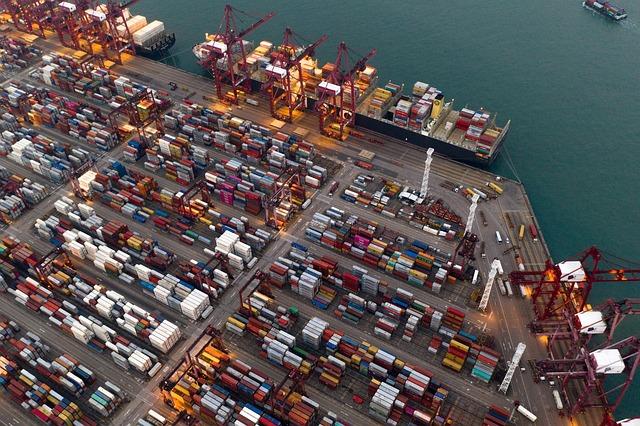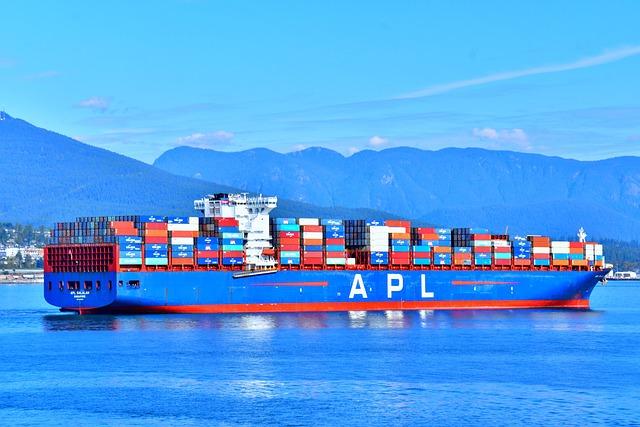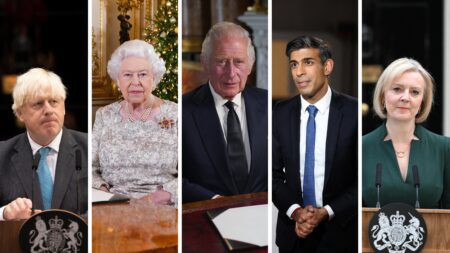In a decisive move reflecting Australia’s strategic economic priorities,the government has announced that it will not implement reciprocal tariffs in response to the United States’ recent imposition of steel tariffs under former President Donald Trump. This decision comes amid growing global concerns about trade protectionism and its potential to incite economic discord among allies. As tensions between major trading partners escalate, the Australian government is prioritizing its long-term trade relationships and stability over short-term retaliatory measures. This article will explore the implications of Australia’s stance, the context surrounding the U.S.tariffs, and the broader impact on international trade dynamics.
Australias Strategic Response to US Steel Tariffs
In light of the recent steel tariffs imposed by the United States, Australia has chosen to maintain a measured approach rather than initiating a tit-for-tat response. Australian officials have emphasized their commitment to dialog and cooperation with the US, aiming to resolve trade disputes through diplomatic channels rather than escalating tensions through retaliatory measures. This strategy aligns with Australia’s broader trade interests, which include maintaining strong ties with the US as a key ally while fostering relationships with other global partners.
The Australian government articulated several key points in their strategic response to the tariffs:
- Monitoring Impact: Australia will closely monitor the effects of the tariffs on its steel and aluminum sectors.
- seeking Exemptions: Efforts are underway to secure exemptions for Australian products from the US tariffs.
- Enhancing Cooperation: Australia aims to enhance cooperation with the US in other trade domains to mitigate adverse effects.
As the situation unfolds, Australia remains hopeful that ongoing negotiations will led to favorable resolutions, thereby ensuring continued trade flow and economic stability amidst global uncertainties.

Economic Implications for Australian industries and Consumers
The recent decision by Australia to refrain from imposing retaliatory tariffs on the United States following the introduction of steel tariffs under the Trump administration carries profound implications for both domestic industries and consumers. For Australian manufacturers reliant on imported steel, the absence of a reciprocal move offers a brief reprieve from inflated costs associated directly with U.S. tariffs. However, it could also lead to a longer-term scenario where Australian steel producers face unfair competition, potentially stifling local production and innovation.
In the consumer market, the ripple effects are likely to manifest in several ways:
- Increased Prices: Consumers may see price increases on goods that rely on steel manufacturing, such as automobiles and appliances, as producers may pass on higher input costs.
- Market Stability: By not engaging in a tariff war, Australia may maintain more stable trade relations with the U.S.,potentially avoiding supply chain disruptions.
- Long-Term Effects: The strategy could discourage investment in local steel production, thereby affecting job growth and economic resilience in the long run.
| Impact | On Industries | On Consumers |
|---|---|---|
| Price Increases | Higher operational costs due to imports | Higher prices for consumer goods |
| Investment Climate | Potential decline in local investment | Less variety and innovation in the market |
| Trade Relations | Stability in U.S.-Australia trade | Consistent supply of key products |

International Trade Relationships: Navigating Future Challenges
Australia’s decision to not reciprocate the United States’ imposition of steel tariffs,announced by former President Trump,highlights a complex dynamic in international trade relationships. While many countries may feel pressured to respond to unilateral tariffs, Australia’s leadership has opted to maintain stability in its trade framework.This strategy is driven by several key considerations:
- Economic Dependencies: Australia relies heavily on trade with the US,especially in sectors such as agriculture and services,making a retaliatory move potentially harmful.
- Global Trade Alliances: By not escalating tariffs, Australia aims to uphold its relationships with other trading partners who may be affected by such measures.
- Market Competitiveness: Maintaining open trade can enhance Australian competitiveness in global markets, allowing for growth and innovation.
As nations navigate the increasingly turbulent waters of global trade policies, the need for strategic collaboration becomes paramount. Australia’s stance could serve as a blueprint for other countries facing similar dilemmas. Analyzing potential impacts and responses, it’s vital to consider the current landscape, which is shaped by emerging trade agreements and geopolitical tensions. The following table outlines some of the major challenges that countries might encounter in the evolving trade environment:
| Challenge | Description |
|---|---|
| Retaliatory Measures | Countries may retaliate, leading to trade wars that can harm economies. |
| Supply Chain Disruptions | Tariffs can disrupt existing supply chains, causing delays and increased costs. |
| Regulatory Changes | New policies can create uncertainty, impacting long-term investment decisions. |

Recommendations for Strengthening Domestic Manufacturing in Australia
To bolster domestic manufacturing in Australia, it is indeed pivotal to enhance government support for local industries through strategic investments and policy frameworks.implementing incentives for manufacturers can stimulate growth by encouraging innovation, research, and progress. Key recommendations include:
- Tax incentives: Provide tax breaks for businesses investing in advanced manufacturing technologies.
- Skill development: Launch training programs to equip the workforce with skills necessary for modern manufacturing practices.
- Public-private partnerships: foster collaboration between government entities and private firms to facilitate resource sharing and infrastructural improvements.
Additionally, enhancing access to local raw materials and promoting enduring practices can help reduce dependency on imports. Policymakers should consider the following strategies:
- local sourcing initiatives: Encourage manufacturers to source materials within australia to support domestic supply chains.
- Green manufacturing incentives: Offer grants for companies implementing eco-friendly production methods and technologies.
- Export support programs: develop assistance programs for local manufacturers to explore and penetrate international markets more effectively.
in Retrospect
Australia’s decision to forgo a reciprocal response to the United States’ imposition of steel tariffs under the Trump administration signals a complex interplay of economic strategy and diplomatic relations. As Australia aims to maintain a constructive partnership with the U.S.,this move underscores the careful balancing act the nation must navigate in a global trade landscape marked by rising protectionism. While the Australian government acknowledges the challenges posed by these tariffs to its own steel industry, it remains focused on fostering long-term ties with its key ally. As the situation evolves, all eyes will be on how both countries will adjust their trade policies in response to ongoing domestic and international pressures.The implications of australia’s stance could reverberate through global markets, making it a pivotal moment in the international trade dialogue.




